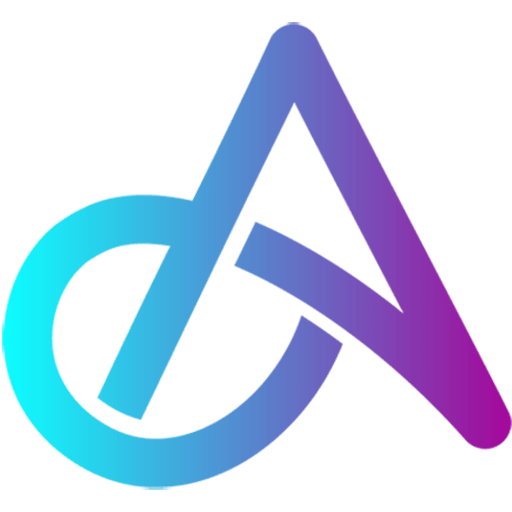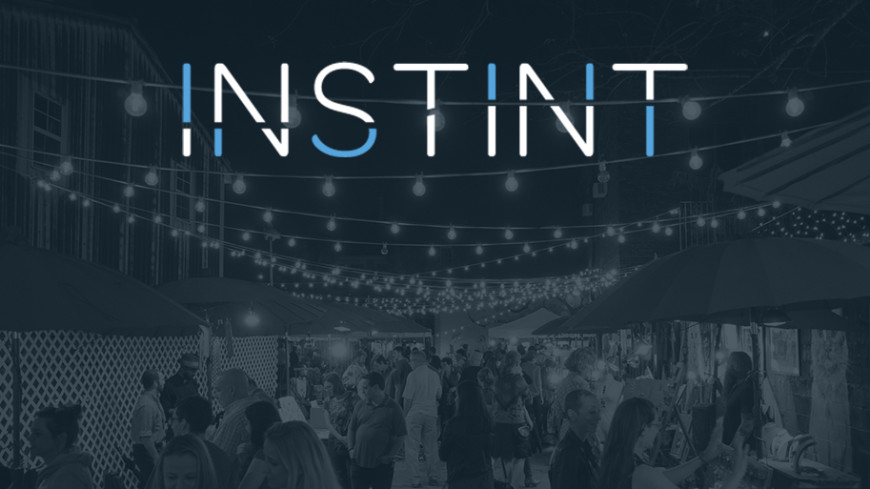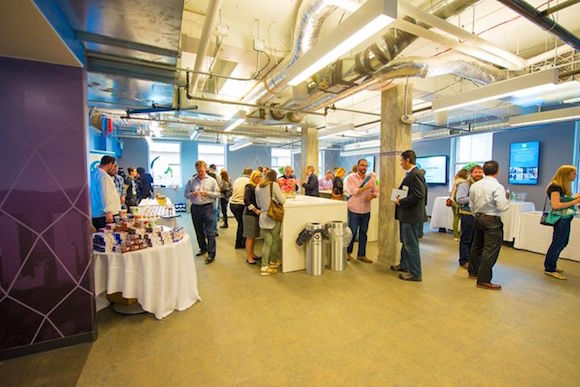
by admin | Apr 11, 2017 | Highlights
Alt Ethos News – Tuesday April 11th, 2017
It is with great pride that we announce our most recent work with an organization with which we’ve shared a close bond and rich history: The Fort Collins Museum of Discovery. The Fort Collins Museum of Discovery or FCMoD as it’s most commonly known is a partnership merged between the Fort Collins Museum and Science Discovery Center in 2008 for the purpose of inspiring scientific education through creative, engaging educational experiences, all under one roof.
The museum’s layout tells their focus on creating experiences which balance education with interactive audio play in an open format through various applications and specialties. Walk through the front doors, past the lobby and you’ll witness an interior aid out with strategically placed installations meant to evoke interactive sound based experiences between groups of all ages. The museum maintains a reputation for its exhibits which encourage self-learning, requiring little to no prior instruction.
The museum brings in many families with children who naturally gravitate towards the most fun exhibits such as the Reactable and Build Your Own Horn. We later asked how many mouth pieces get washed every day at the Build Your Own Horn exhibit: Over 300. We’re gonna try and avoid that for ours.

Walk past the Build Your Own Horn exhibit and you may pass right by a dark unassuming semicircle room lined with a couch facing a tv which felt like a small lounge. Think about that: An underused, empty lounge with everyone else outside playing at the exhibits.
Our job is to create an experience which marries sound and motion in a way which makes approaching a musical instrument as smooth a process as possible, a visual ensemble which binds humans to the act of play upon entering the room. In our case the most sensible approach is to position Kinect sensors and projection overhead, ensuring no damage to the equipment or disruption of the intended experience. Given the most common users are children these exhibits see a great amount of use and misuse. With this in mind we’ve planned to create an experience which anyone can enjoy without a great risk of damage to either our equipment or museum visitors.

We arrived at 9:30 armed with a Ben Q and Optoma projector with the intent of measuring the space and testing throw distance from above. We wanted to gain a scope of our projector capabilities before the meeting. A matter of minutes into testing and we see a child walk inside wide-eyed at our feed video. Ben kindly shooed him out and we laughingly told the story later.
At 10:00 on March 31st our team had the pleasure of sitting down with Ben Gondrez – Digital Dome Manager, Ben Griswold – Exhibit Manager, Nick Duarte – Music Curator and Brent Carmack – Associate Director, the main players in our discussion of the function, parameters, application and overall purpose of this installation.
Climb the stairs next to the front door and you’ll reach the Otterbox Digital Dome Theatre, Ben Gondrez’ domain. The Digital Dome showcases international animations on an immersive format, a practice which has accelerated in recent years in place of strictly educational displays.
In a music oriented town such as Fort Collins Nick Duarte is the most knowledgeable of music theory and most passionate about the witnessing the joy moments which comes over those in a trance of musical play.
In the Discovery meeting Ben Griswold illuminated how the combination of the history and the science museums into one entity defines a lot of their legacy and ideology as a hybrid institution, one that can see history from the lens of science and science through the lens of history. This man’s vision is true north in the purpose of FCMoD’s exhibits.
Brent Carmack has overseen projects which characterize the museum as a landmark of Fort Collins such as the FC150, a project which called for submissions of what makes Fort Collins, Fort Collins. His attention to the “what if” questions spoke of his extensive experience with the museum.
Today was our first impression of each party meeting as a group. We set the tone with a few improv exercises to immerse ourselves into a childlike mindset. In the first game one person moves any way they choose and the rest of the group makes onomatopoeias matching with their movements. The second was a game of charades; One person acts out an audio term to the best of their ability and the group guesses the term. This proved to be quite a fitting approach to begin discussing an installation designed to inspire a discussion which ultimately ended up crossing the globe in terms of how human beings interact with sound.
The tone was immediately set as we dove into why this creation is important:
Music can be created in many more ways than traditional instruments, broadening our understanding of the ways that sound can be created as a metaphor for uncovering new possibilities in how to navigate through the sonic environments that are essential to our experience of the world.
The next question is “How can we make this possible?” We began discussion of scope and parameters including technical capabilities. Through overhead Kinect sensors and projection we’re able to capture data from above which can be interpreted in multiple ways: Based on our survey of the space, stakeholders and museum patrons we provided three concepts catering to specific effects on the user, providing sketches illustrating each from different perspectives:

Ripples: Colored ripples represent different expressions of instrumentation allowing users to create compositions. The ability to change the placement and sonic qualities of ripple generators and record your intersections, thus creating loops fosters both individuals and groups to create a wide range of musical forms.
Hopscotch: The room is broken into segments representing musical instruments. You step in and based on your position trigger pitch and frequency. If you stand still long enough lily pads of color light up your position and paths you can jump to. For example: If you’re in the drum section you can hop to the kick drum or snare, building a song as you go.
Mirrors : Mirror uses the same elements as either “Hopscotch” or “Ripples” to create sound with movement. There are three distinct differences: 1. Each patron is represented through a digital abstraction / object to give reference to their spatial movement in the room. 2. The patterns are only represented in the digital space. and 3. The mirrored virtual back wall is a virtual landscape/design that bends, reshapes, and distorts with the music and movement.
Amidst snacks we poured over the three concepts, imagining each detail in formation of our approach. By the end of the day all parties left in rabid anticipation to see this project come to life.
Before leaving we returned to the empty room for final measurements. As we were wrapping up our measurements we heard a small child who had wandered inside say “There’s nothing in here”. He turned as his mother guided him away as we smiled and remarked that that reaction is about to change very quickly.
Matt Maes is a Denver animator focused on immersive and interactive technology. He is Chief Influence Officer of Alt Ethos, Ltd and is also an executive member of the nonprofit organization Denver Arts and Technology Advancement (D.A.T.A.)

by admin | Apr 5, 2017 | News
Alt Ethos News – Wednesday April 5th, 2017
Since the inception of our company in April 2016 our mission is and has been to use interactive technology to bring people together. We’re dedicated to advancing awareness of interactivity to the public. Since then we’ve gained a massive amount of support from Denver city government and industry leaders. In order for us to achieve this we’ve made a key focus of becoming part of the creative tech community both in Denver and outside, gathering as much knowledge and insight as we can to boost our abilities and ultimately enhance Denver.
In January Paul Elsberg – CSE Chief Sales Engineer / Creative Developer attended New Orleans’ INST-INT conference, an annual gathering of interactive technological exhibitions showcasing practical creative applications drawing together diverse groups of people; In other words, right in our wheelhouse.

INSTINT EXPLORES THE ART OF INTERACTIVITY FOR OBJECTS, ENVIRONMENTS AND EXPERIENCES.
INST-INT is a one of a kind, world renowned annual conference which draws in eclectic A-list interactivity pros and attendees with exhibits of Installation & Interactive Art, Experience Design, Responsive Environments & Objects, Interactive Exhibits & Displays, Creative Coding, DIY Making & Hacking, Architecture & Technology, Sensors & Wearables.
Matt Maes – CIO Chief Influence Officer / 3D Generalist previously participated in MIT’s “Reality, Virtually, Hackathon!” which according to Network World’s Steven Patterson set a record for the largest VR/AR hackathon.

He later continued his game development experience in the Global Game Jam hackathon, an open competition organized across the globe with a focus on bringing gamers together to create work which engages them to act as part of a team. Maes has also been extended the opportunity to speak on the VR/AR panel at GlobalMindED conference in June. GlobalMindED is a nonprofit organization focused on increasing the success rate of first generation college students, connecting graduates and employers.
On April 19th at the Commons on Champa we’ll be presenting Our Vision for Denver and celebrating our One-Year Anniversary as a company. Our CEO Ethan Bach will be speaking on our vision for the future of Denver as an international hub for innovative experiences with media in the physical realm.

We’ve lived, worked in and experienced Denver for years and now our plan is to use this technology in collaboration with government and industry leaders to establish Denver as a mecca for creative, connected experiences. Bach has experienced a fascinating journey within immersive media, art, activism and ultimately bringing his knowledge and experience as CEO of Alt Ethos.
After the presentation we’ll be celebrating our one-year anniversary with drinks, hor d’ouvres and the unveiling of our interactive LED wall located at the end of the hallway leading to the Event Space. Our installation utilizes Kinect sensors to synchronize with your movement patterns, mirroring a variety of positional effects on opposite LED screens in real-time.
Our purpose behind this installation and our work at large is to design intimate experiences within groups of people. Our sense of reality is determined by how we process our senses. Engagement in an active and playful vs passive experience brings us to a higher state of awareness which we normally wouldn’t experience in our day to day lives – An experience which suspends you for a moment, embracing all and saying “This is about you. You are included and important.”
In our research we’ve stumbled upon some staggering and encouraging facts which shine a light in the direction of our purpose:
- Customer Experience is the future of design. Adopting practices that elevate the customer experience will undoubtedly produce a return on investment and provide a steady foundation for your brand.
-UX Magazine, 2016
- Experiential Design activates chemicals in the brain: Dopamine, oxytocin, serotonin, and endorphins; These increase happiness, productivity, and customer loyalty.
-The Neurochemicals of Happiness, Psychology Today and Technology Advice
- Experiential Design increases brand awareness by 81% and increases a deeper customer involvement by 57%
-Brand Survey, Report Event Marketer, 2015
- Millennials spend $3.3 billion annually in Colorado. $2.2 billion annually in Denver alone.
-The Millennial Influence in Denver, Development Research Partners and Census.gov, 2016
The Commons on Champa

Over the past two years our company has had the privilege of working out of the Commons on Champa, downtown Denver’s small business entrepreneurial hub. For all of the recent positive signs our current success wouldn’t be possible without their support.
The Commons on Champa represents a partnership between the Downtown Denver Partnership, Colorado Technology Association and the city of Denver. The Commons parallels the openness given by its name in its practices by providing resources and workshops to holding high tier events, stapling its name as Denver’s most openly centralized habitation space for Denver’s future entrepreneurial leaders. We’ve taken in a great amount of insight and support from mentors and other key influencers into what it means to connect progressive minds together. We’d like to shine a spotlight on their work and share words from the man who runs daily operations, Jesse Shuler.
Jesse Shuler – Building Coordinator manages the Commons day-to-day operations with a keen mind and a light heart. Jacqui Dietrich – Program Manager lends her entrepreneurial insight into functions which staple the Commons as an environment which fosters small business growth. Together they’ve allowed a solid place for us to excel, developing a close relationship with us along the way.

We recently had the opportunity of interviewing Shuler for an in depth talk on the Commons’ amazing set of resources which he describes as “A public private partnership which became Denver’s first public campus for entrepreneurship. When we opened our doors we wanted to create a campus which is gonna supply entrepreneurs with all the kinds of tools they’re gonna need – A place where anyone is welcome. We really wanted to lower the barrier with access to great resources like mentorship, the US Patent and Trademark Office, the Small Business Administration, or amazing space which has great technology, a great community and just feels right to work in.”
The Commons was established and aims to “Act as a blueprint that anybody can use. The mission is wholeheartedly to authentically create a hub which showcases Denver’s commitment to the entrepreneurial community.” – Spot on statements on a remarkable space.
Shuler also had encouraging words for our company and his insight into interactive technology: “The market is demanding new and progressive ways of connecting with people. What I’ve seen is that the standard marketing techniques are pretty tapped out. The market demands for something to change and be more progressive and Experiential Design does that because it connects to people on a more human level – it taps into your senses, your emotions and your sense of time and space. Experiential Design tends to resonate with people a lot quicker. It spikes out of the status quo. Experiential Design takes you out of what is the day to day and the normal and gets you thinking a lot bigger, more creatively, and it creates a lot more platform for opportunity to expand your brand.”
We asked for his insight on what blend of skills best dictates success in our industry and for entrepreneurs as a whole: “A skill that is very important is to pay attention to what the market is demanding. Take your skill set, your knowledge, your expertise and supply what the market needs. If you’re able to be flexible and pivot and think big I think that’s a huge need especially for folks in Experiential Design.
He also had some warm words on our history together: “It’s been really fun to get to know the Alt Ethos team. I’ve loved the experience of taking what technologies we have on our own campus and overlaying it with the Alt Ethos ideas and seeing what happens from it. It’s been really fun to think creatively and think big on how we can explore the technology.”
Thank you Jesse and all at the Commons. Here’s to many successful times ahead.
Matt Maes is a Denver animator focused on immersive and interactive technology. He is Chief Influence Officer of Alt Ethos, Ltd and is also an executive member of the nonprofit organization Denver Arts and Technology Advancement (D.A.T.A.)

by ethanbach | May 12, 2015 | Personnel
Ethan Bach was interviewed by The Fulldome Blog by Jason Fletcher. The interview covers his recent work, information on the International Fulldome Arts Alliance, current dome art and event project, the future of fulldome, and more. Fletcher recently started vlogging when he attending IMERSA Summit. He is a natural video host and decided to continue with his new series The Dome Dialogues. Ethan became his first interviewee via Skype for the new The Dome Dialogue series.
The Dome Dialogues – Ethan Bach with The Fulldome Blog. vlog interview
[fvplayer src=”https://vimeo.com/126215723″]
The Fulldome Blog operates out of the Charles Hayden Planetarium is located within the Museum of Science, Boston. Jason Fletcher is a Science Visualizer & Live Presenter at the planetarium, since 2010.

The has an honest exchange with a nice flow. Corrections; Ethan transposed the name of University of Colorado Boulder and completely left out the name of the planetarium, Fiske. A shout our to those he referred to in the interview:
Domes:
Fiske Planetarium
Gates Planetarium
Fort Collins Digital Dome
Digital Dome at Institute of American Indian Arts
Satossphere at Society of Art and Technology
Researchers:
vDome by Charles Veasey – open source art server
David Beining at UNM ARTS Lab
Artists/Producers:
Ben Gondrez at FCMoD
Timmy Edens of DomeMasters
Signal-to-Noise Media Lab











